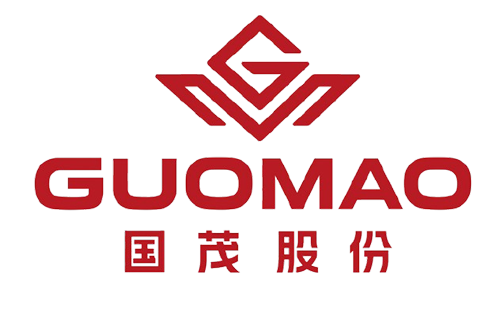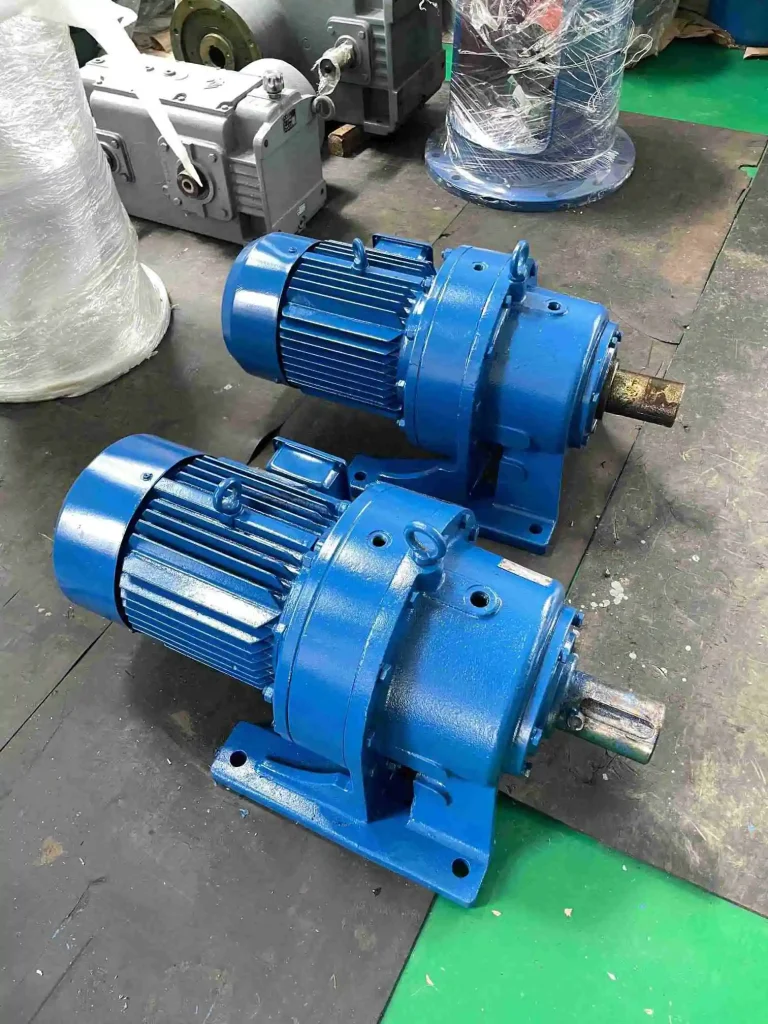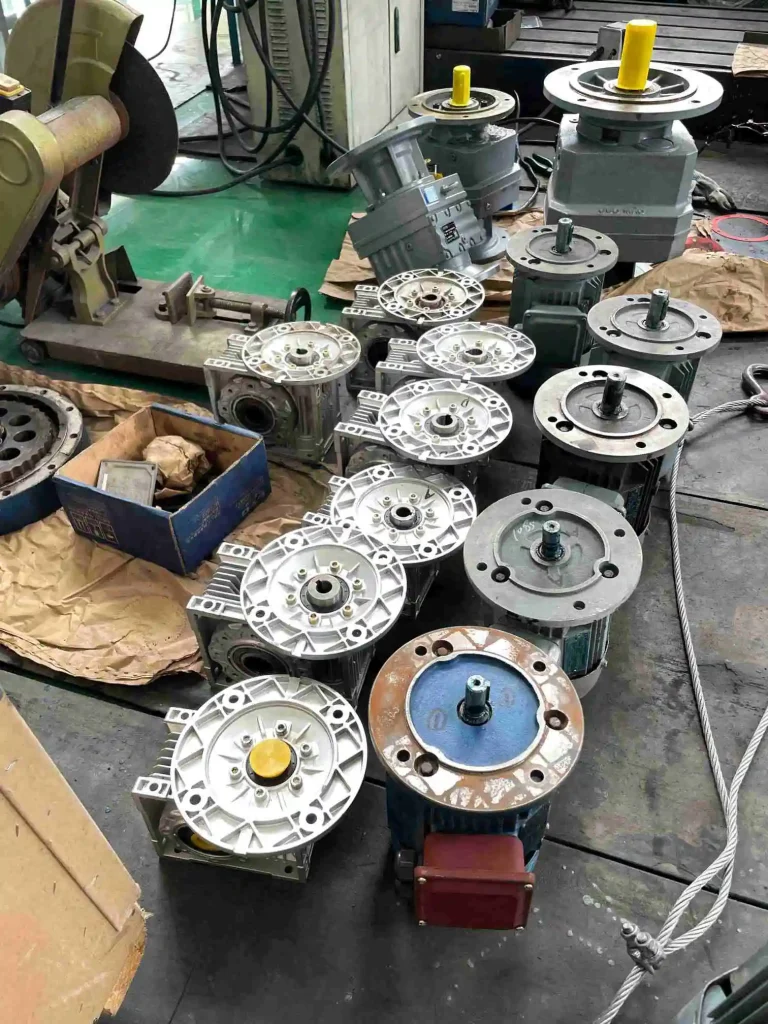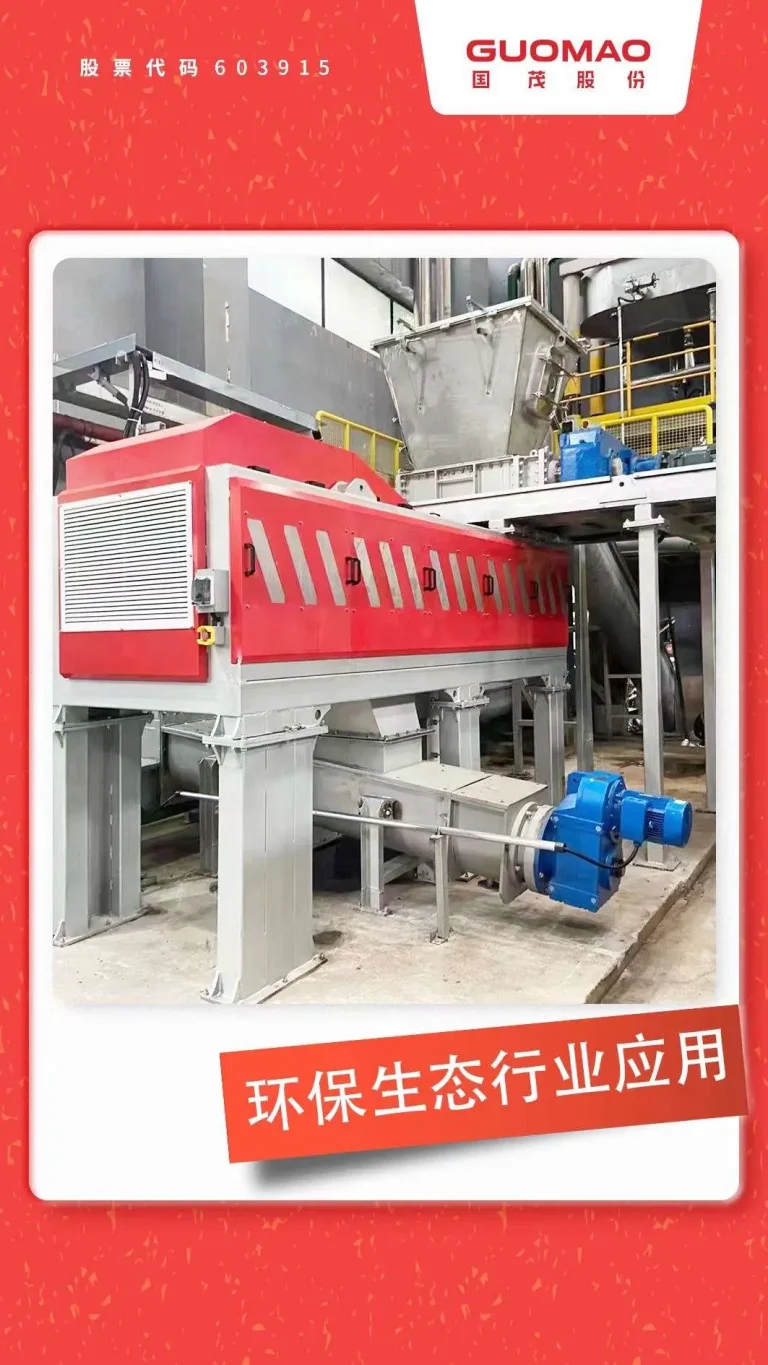工业齿轮箱与动力传动简介
工业齿轮箱对现代制造业至关重要。它们将动力从电机可靠地传递到机器。选择正确的变速箱会影响效率、正常运行时间和成本。同轴螺旋直列齿轮箱和平行轴螺旋齿轮箱是流行的选择。它们以其在全球工业中的可靠性而闻名。
自动化和节能生产正在快速增长。活动如 2025年大阪制造业世界 强调大型项目的必要性。了解变速箱的差异是工厂经理、工程师和买家的关键。这种选择会影响成本控制、节能和设备可靠性。
国茂亲眼目睹了这些行业的变化。凭借30多年的经验、53万平方米的制造基地和每年超过4亿美元的销售额,国贸是中国值得信赖的变速箱制造商。我们的目标是为全球合作伙伴提供提高效率和可靠性的传输解决方案。
同轴螺旋直列齿轮箱的定义和应用
什么是同轴螺旋直列式齿轮箱?结构设计说明
同轴螺旋直列式齿轮箱的输入轴和输出轴位于同一轴线上。这种设置使设计紧凑。它允许有效的扭矩传递。斜齿轮与正齿轮不同,啮合平稳。这减少了噪音和振动。这些特点适合连续运行。
齿轮齿被切割成一定角度。这增加了齿轮之间的接触。它改善了扭矩传递并减少了磨损。因此,变速箱的使用寿命更长。
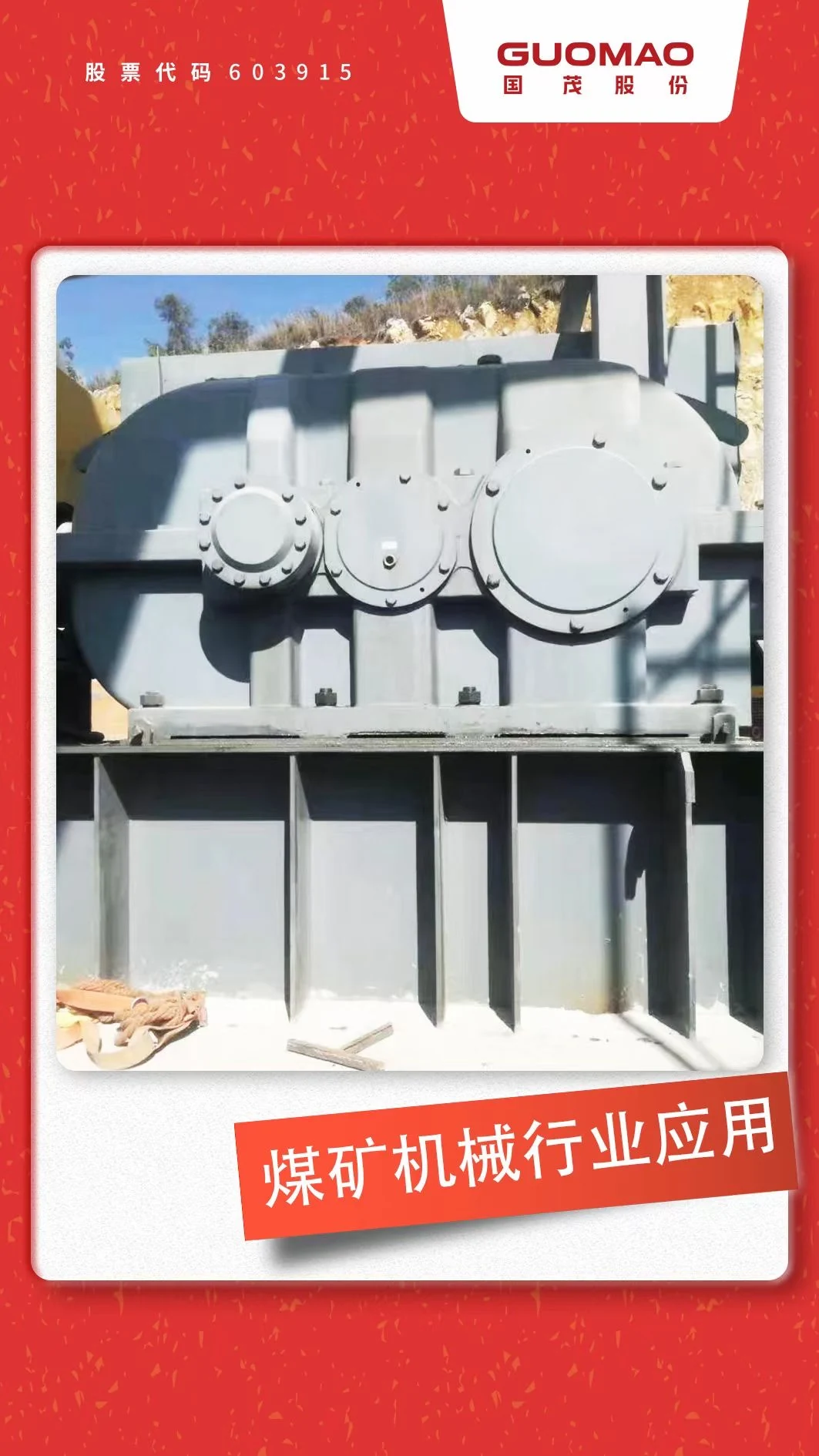
主要优点:体积小、效率高、易于对齐
同轴直列式齿轮箱具有几个优点:
- 高效:齿轮角减少能量损失。效率达到95%以上。
- 紧凑的占地面积:直列轴节省空间。
- 性能平稳:斜齿轮重叠。这降低了振动和噪音。
- 易于集成:轴对齐简化了电机耦合。
- 使用寿命长:精密齿轮和轴承延长了耐用性。
输送机、泵、混合器和包装机中的典型应用
这些变速箱在需要稳定、中等负载运行的行业中运行良好。它们用于:
- 输送机和搅拌机的食品加工和包装。
- 泵和曝气器的水处理系统。
- 带式输送机的物流和仓库自动化。
- 制药和化工设备,低噪音很重要。
在空间有限且需要高正常运行时间的设施中,通常会选择同轴直列齿轮箱。
平行轴斜齿轮箱的特点和使用案例
什么是平行轴变速箱?轴布置和扭矩路径
平行轴斜齿轮箱的输入轴和输出轴并排,没有对齐。扭矩通过多个档位移动。这使得变速箱能够处理重载。偏置轴为扭矩和传动比调整提供了灵活性。
在高扭矩、重型工业过程中的优势
平行轴齿轮箱是为了强度而建造的。它们的好处包括:
- 高扭矩能力:它们能够处理大负载而不会断裂。
- 冲击载荷下的耐久性:它们能在采矿等恶劣环境中承受压力。
- 设计灵活性:它们适合大型机器的水平或垂直设置。
- 使用寿命长:热处理齿轮耐磨。
- 强大的冷却选项:油系统和冷却器使变速箱在频繁使用时保持稳定。
采用平行轴齿轮箱的行业:采矿、钢铁、塑料、发电
这些变速箱常见于:
- 轧钢厂和输送机的冶金和钢铁厂。
- 破碎机和堆垛机的采矿和材料处理。
- 双螺杆挤出机的塑料挤出。
- 冷却塔和重型输送机的能源部门。
它们在停机成本很高的情况下提供了可靠性。
同轴直列齿轮箱与平行轴齿轮箱:关键差异解释
设计结构比较:轴对准和载荷分布
- 同轴直列:输入轴和输出轴对齐。这提供了紧凑的设计和简单的设置。
- 平行轴:轴平行但偏移。这支持更高的扭矩,但需要更多的空间。
| 特性 | 同轴螺旋直列齿轮箱 | 平行轴斜齿轮箱 |
| 轴对准 | 输入和;单行输出 | 轴平行但偏移 |
| 空间要求 | 紧凑,节省空间 | 占地面积更大 |
| 扭矩容量 | 中等,连续运行高效 | 高,适用于重型工艺 |
| 效率 | 95%+ | 92–95% |
| 振动与;噪音 | 更低、更平稳的操作 | 中等,负载下稳定 |
| 安装灵活性 | 最适合紧凑型机器 | 非常适合重型多级系统 |
| 冷却选项 | 自然冷却或风扇冷却 | 油循环、水冷可用 |
| 生命周期成本 | 前期成本更低,适用于中等负载 | 前期成本更高,长期停机时间更短 |
连续运行下的效率和扭矩性能
直列式变速箱节能。它们运行稳定。平行轴齿轮箱能够承受更高的扭矩和更大的负载。对于专注于节能的工厂来说,直列式变速箱可以减少电力使用。对于大扭矩需求,平行轴齿轮箱是必不可少的。
安装空间、灵活性和维护要求
直列式变速箱非常适合小型工厂或模块化设置。平行轴齿轮箱适用于需要布局灵活性和应力下强度的设置。它们需要更多的空间,但能更好地处理繁重的任务。
成本、耐用性和生命周期考虑因素
同轴齿轮箱的前期成本更低。它们更容易安装。平行轴齿轮箱的成本更高,但在恶劣条件下使用寿命更长。它们减少了停机时间,降低了长期成本。
工业应用中同轴直列和平行轴齿轮箱的选择
选择因素:额定功率、空间限制、效率需求
选择时,请考虑:
- 扭矩和负载需求。
- 可用安装空间。
- 期望的能源效率。
- 维护资源。
- 重型高温环境需要冷却。
针对输送机、挤出机、混合器和重型机械的行业特定建议
- 同轴直列齿轮箱:最适合输送机、搅拌机和紧凑型系统。
- 平行轴齿轮箱:挤出机、重型输送机和钢铁生产的理想选择。
为什么像国茂这样值得信赖的品牌提供可靠的变速箱解决方案
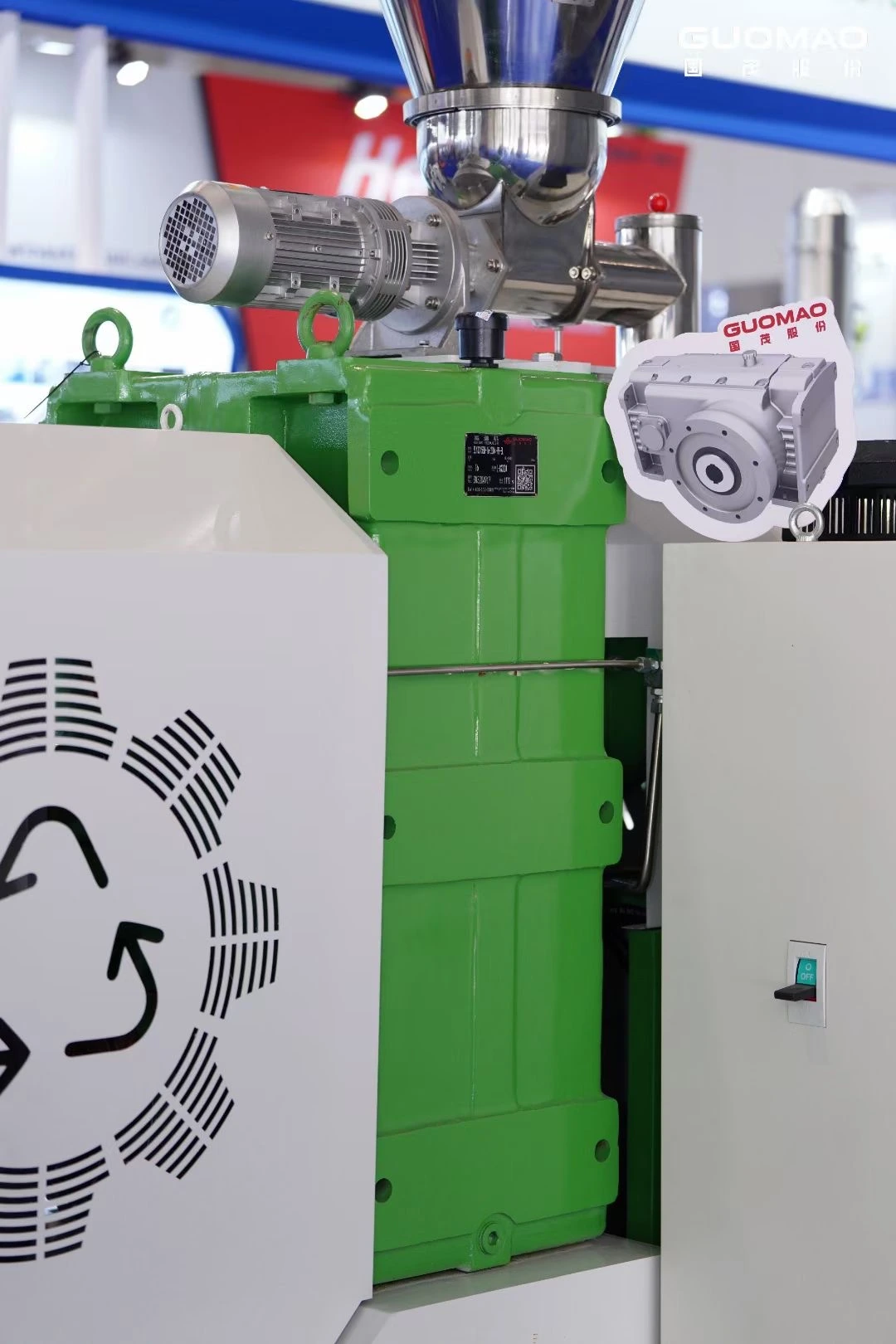
国茂 它不仅仅是一家变速箱制造商。我们是全球传播专家。我们的重点是创新和可靠性。30多年来,我们建立了完整的产品系列,包括GR系列同轴斜齿轮减速器和 GF系列平行轴-斜齿轮轮减速电机这些用于冶金、塑料、能源和物流。
我们的优势包括:
- 制造业领先地位:超过530000平方米的工厂空间,配备先进的齿轮生产线。
- 创新与研发;D: 江苏省高新技术企业。产品符合DIN、ISO和GB/T标准。
- 全球声誉:国贸变速箱应用于全球钢铁厂、输送机、采矿和水处理。
- 客户至上:我们的“;以客户为中心,以奋斗者为基础”;文化建立长期信任。
《2025年大阪制造世界》等活动表明,需要可持续、节能的输电解决方案。国贸’;强大的R&;D和可靠的生产使我们成为全球的首选。
常见问题解答
Q: 哪家变速箱制造商在同轴和平行轴变速箱方面最可靠?
A: 像国茂这样经验丰富的企业在冶金、采矿、塑料和能源领域建立了质量、广泛的产品系列和良好的业绩。
Q: 如何在同轴螺旋直列齿轮箱和平行轴齿轮箱之间进行选择?
A: 直列式变速箱非常适合小型化、轻量化的系统,如输送机。平行轴齿轮箱最适合轧钢或采矿等高扭矩应用。
Q: 平行轴齿轮箱的寿命会比同轴直列齿轮箱长吗?
A: 平行轴配置可以承受更多的惩罚。同轴齿轮箱适合连续、中等负荷运行的寿命。
Q: 重型设备工业齿轮箱需要寻找哪些关键属性?
A: 高扭矩、耐热、重型轴承、品牌声誉。国茂齿轮箱采用先进的螺旋设计。
Q: 同轴直列变速箱与平行轴变速箱——哪种更节能?
A: 同轴直列式变速箱具有更高的效率(95%)。平行轴齿轮箱平衡了效率和高扭矩能力。

